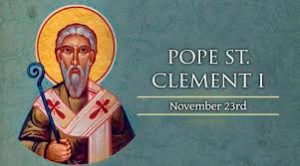HOMILY WEEK 33 06 – Year II
The Transfiguration and Resurrection:
Ferial – St. Clement I
(Rev 11:4-12; Ps 144; Lk 20:27-40)
**********************************************
During a NECHI course on addiction’s awareness, I realized that only one other participant and I, out of a group of twenty-three, actually believed in the resurrection. All the others were into reincarnation. A friend tells me her niece seemed to also believe in reincarnation, because of a faulty image of heaven – she didn’t want to sit on a cloud eternally doing nothing.
We need to educate our people on the true nature of the resurrection. It will be a whole new heaven and a new earth; a divine dance with the Trinity; all of creation will be made new. There will be no more suffering, war, violence or evil. Our joy will be boundless, and perhaps all our pets and the animals we love will be there too.
Jesus at the Transfiguration is a symbol of the new world. The very architectural structure of the Church of the Transfiguration on Mt. Tabor in Galilee seeks to proclaim that mystery with its three towers. The central main tower represents a tent Peter wanted to build for the transfigured Lord, the two smaller ones, tents for Moses and Elijah. Both are featured in paintings inside the church.
Moses is pictured with bare feet, for he is on holy ground he does not own. The burning bush is on the right, and the rock he struck twice on the left. That rock symbolizes the one crucifixion of Christ, so he would only see and not enter the promised land because he struck the rock twice. Nevertheless, his face glows because he saw the glory of God.
Elijah is pictured with the unburnt sacrifice of the priests of Baal on the right, and his burning sacrifice on the left. His face also glows with the glory of God. Both Moses and Elijah, in the Lukan account, were speaking to Jesus about “his departure in Jerusalem he was about to accomplish.” In the midst of all that glory, they were talking about suffering. It would be through the mystery of the Cross that Jesus would re-enter into his glory, reveal the depth of God’s love for us, and redeem our sinful humanity.
That brokenness on the cross is the key to the mystery of the kingdom of God, and our participation in that kingdom. When we can accept suffering in our lives the way Jesus did, without bitterness or resentment – only love and forgiveness – we are already in the kingdom of God and sharing in God’s glory especially through peace and joy. What is truly exciting is that new world begins today, through faith, love and worship.
Faith in the passion, death and resurrection of Jesus Christ not only gives us a deeper understanding of suffering, it also impacts how we inter-relate with the world of today. According to Bishop Robert Barron, those who hold to the resurrection of the body are those who are most effective at working for justice and peace in this world. If you are a complete materialist and secularist, you hold that everything and everybody, in the end, just fades away. But if you believe in the resurrection of the body, then everything in this world is destined for redemption. Everything matters, and in the end, “the way we do anything is the way we do everything”, as Richard Rohr likes to quip.
 Today the Church offers us the option of honouring St. Clement I, someone who took an active role in seeking reconciliation in the early Church. Pope Clement I is recognized as third in succession to Peter. Other than the fact that he lived in the 1st century, little is known about his life or death. Tradition suggests Clement was a contemporary of Peter and Paul, perhaps a former slave of the imperial court. He was martyred in exile about AD 99. Clement’s fame rests in a letter he wrote to the Church of Corinth when Christians there revolted against their leaders. Intervening as bishop of Rome, he clearly expected obedience, an attitude that demonstrates the primacy of Rome at an early date.
Today the Church offers us the option of honouring St. Clement I, someone who took an active role in seeking reconciliation in the early Church. Pope Clement I is recognized as third in succession to Peter. Other than the fact that he lived in the 1st century, little is known about his life or death. Tradition suggests Clement was a contemporary of Peter and Paul, perhaps a former slave of the imperial court. He was martyred in exile about AD 99. Clement’s fame rests in a letter he wrote to the Church of Corinth when Christians there revolted against their leaders. Intervening as bishop of Rome, he clearly expected obedience, an attitude that demonstrates the primacy of Rome at an early date.
One of the mysteries portrayed in the alcove behind the altar in the Church of the Transfiguration in the Holy Land is the Eucharist, featuring three angels and a host. The Eucharist is all about transformation – humble gifts of bread and wine are transformed into the body and blood of Jesus. Just as important, we are transformed into the Body of Christ.
So, let us believe in the resurrection, love one another and worship our God with our whole being, in the anticipation of seeing God face to face, but also experiencing the glory of God in our lives here and now.



